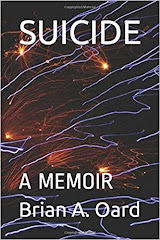"In 1989, Bob Flanagan nailed his penis to a wooden board."
That's probably the single best sentence in all of Peter Gay's Modernism (it's certainly the most enjoyable), and unfortunately, both for Gay and the reader, it's a quote from another writer's article. This fact suggests the biggest problem with Gay's book: it is for the most part a compendium of received opinions, with hardly an original or provocative idea in its 500+ pages. Less a history of Modernism than a historian's extended commentary on that 'movement of movements,' Modernism reads like a very, very, very long New York Review article: it's an interesting, readable, and fairly fast-paced commentary that (unlike most NYR pieces) contains no revelations among its pleasures. Aside from Gay's discussions of Le Corbusier's Vichyite collaboration and Hamsun's enthusiastic Hitler-worship, there's very little here that will surprise anyone already familiar with the literature on Modernism. And if the book is considered solely as an introductory survey, other problems arise. For all its impressive breadth, Modernism's coverage of this international movement remains spotty and mostly shallow. Confining ourselves to the Bs, we note that Brecht is only mentioned in passing, Balthus not at all, and Bacon only in a list of artists not covered. British and American Modernism are slighted: no mention of Wyndham Lewis, very little of Pound, no Stein, no Dos Passos or Faulkner or Wolfe, no John Marin, no O'Keefe or Stieglitz, hardly any Man Ray, and Virginia Woolf is forced to stand for all of Bloomsbury. Gay ignores the currently accepted academic division of 20th-century culture into Modern and Postmodern, and while I commend him on this (I think of 'Postmodernism' as Late Modernism), I find his discussion of Pop Art grumpy and geezerish. These pages especially would have benefited from deeper thought and less reliance on the critic Gore Vidal delightfully refers to as 'the Hilton Kramer hotel.' Gay also belabors a paper tiger in his repeated insistences that Modernism was "not democratic." No one who knows enough about the trend to read this book will be under the impression that it was, not after the well-publicized (and now very old news) revelations of Pound's black shirt, Yeats's blue shirt, Eliot's anti-Semitism, Woolf's snobbery and Hamsun's fervent Nazism, to list just a few of the most prominent examples. (Any list of great Modernist artists with at best equivocal relationships to totalitarianism must also include Shostakovich, Richard Strauss and Eisenstein, and no viewer of Birth of a Nation can be unaware of David Wark Griffith's dipshit racism.) On a more abstract level, Gay's two defining characteristics of Modernism--the "lure of heresy" and a "principled self-scrutiny"--might have been synthesized into a single, more focused idea--the heresy of inwardness--that may well have produced a better and deeper book. As it stands, this unoriginal and mostly unshocking work is a most un-Modernist survey of Modernism.
I'll take this opportunity to recommend two better books on the Modern: Robert Hughes's instantly classic The Shock of the New and Peter Conrad's lively and learned Modern Times, Modern Places.
Monday, December 13, 2010
Subscribe to:
Post Comments (Atom)










No comments:
Post a Comment